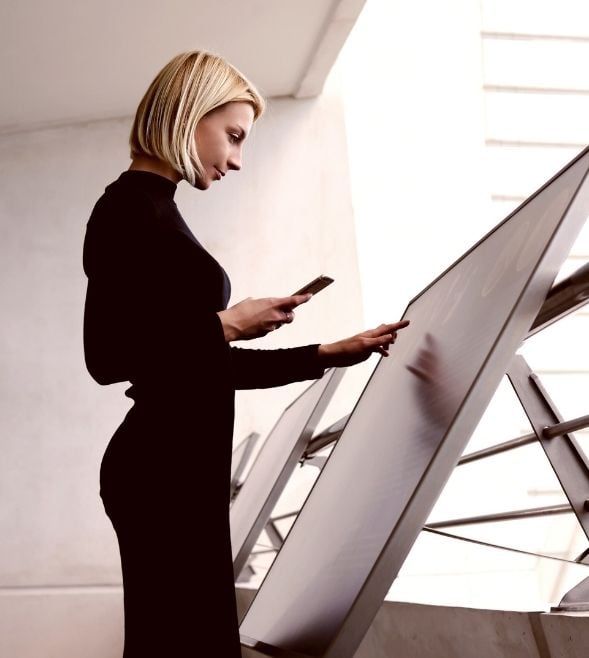
ViDA can be divided in the three main areas:
-
Digital reporting (DRR) based on e-invoicing
Following our preceding general article about VIDA, this article gives a more detailed overview of the proposed changes in the area of the DRR based on e-invoicing and briefly comments on the impact of them for businesses. More details about other areas can be found by clicking on a relevant link above.
Changes in e-invoicing from 2025
From early 2025 (20 days from the adoption of ViDA that is expected in March 2025) no derogation is required for domestic e-invoicing requirements. After adoption of the ViDA, MSs are not required to ask for an agreement from the European Commission to implement e-invoicing requirements for domestic transactions (provided it applies only to established taxpayers). MSs should allow e-invoices that comply with the European standard on e-invoicing (EN 16931) adopted by the Commission Implementing Decision (EU) 2017/187055 and the Directive 2014/55/EU in the context of the B2G e-invoicing (the ‘European standard’). MSs have the option to introduce mandatory e-invoicing for domestic B2B and B2C transactions (for established businesses) without the need for a derogation from the European Commission. This could leave businesses with minimal time to prepare.
Changes in e-invoicing from 1 July 2030
New rules for e-invoicing
- E-invoices will not be subject to the acceptance of the recipient.
- E-invoicing will be the default system for the issuance of invoices.
- A new definition of e-invoices will be introduced.
An ‘e-invoice’ will mean an invoice that contains the required information and which has been issued, transmitted, and received in a structured electronic format that allows for its automatic and electronic processing.
Common system for EU e-invoicing from 1 july 2030
The obligations
There will be an obligation to issue structured e-invoices and to transmit data from these invoices to the relevant national VAT authorities’ electronic portal, in real-time.
Businesses will be obliged to:
- issue structured e-invoices including all required data in standard format within 10 days from a chargeable event; and
- transmit data from these invoices to the relevant national VAT authority’s electronic portal in real time.
While the supplier should report data of the sale when the e-invoice is issued or should be issued, the recipient should report the transaction within 5 days.
Scope
The proposed EU DRR system (e-invoicing and digital transaction-based reporting (DTBR) would not only apply to all intra-Community supplies and acquisitions of goods and services, but also to all business-to-business (B2B) supplies of goods and services that are taxed in a MS other than that in which the supplier is established. The mandatory reverse charge would become mandatory to all B2B transactions by non-established suppliers from 1 July 2028 (see more details in a separate article “ViDA (2) – extension of OSS”. The transactions which will be subject to this extended mandatory reverse charge will also be part of the e-invoicing and DTBR.
More specifically, the EU DRR (e-invoicing and DTBR) would cover:
- intra-Community supplies of goods,
- ‘general’ B2B services rendered between taxpayers established in different MSs,
- supplies of other services subject to the mandatory reverse charge, and
- supplies of goods subject to the mandatory reverse charge.
E-invoicing
Following new data elements should be included on e-invoices:
- mandatory payment details (the identifier of the bank account in which the payment for the invoice will be credited).
- in the case of an invoice that corrects the initial invoice, the corrected/initial invoice’s sequential number.
The possibility to issue summary invoices (covering multiple supplies made during the same calendar month) will only be allowed under certain conditions and should be issued within 10 days.
Digital transaction-based reporting (DTBR)
From 1 July 2030, the European Sales Lists (and Purchase Lists which are obligatory in a few MSs) will be abolished and replaced with the DTBR.
The DTBR for intra-EU transactions will cover the same transactions that were covered by the European Sales Lists (ESLs) with the exception of the reporting of call-off stock transfers falling under EU simplifications which will cease to exist. In addition, supplies of goods and services subject to the extended mandatory reverse charge will be included in the ESLs from 1 July 2028 and in the DTBR from 1 July 2030.
The data containing most of the mandatory VAT invoice details would need to be transmitted on a transaction-level.
The data contained in the e-invoices should be transmitted to tax authorities immediately after the issuance of the e-invoice, or after the date the invoice should have been issued in case the business has not complied with their obligation to issue an e-invoice. The transmission of the data has to be carried out electronically, and MSs will provide the means for that transmission. Finally, the information can be submitted directly by the taxable person or by a third party on their behalf.
The transmission of the data can be done according to the European Standard. MSs can provide for the transmission of the data from e-invoices issued under a different format, as long as they also allow the use of the European Standard.
Reporting purchases of goods and services taking place in the EU
The person acquiring the goods and the recipient of the services will be required to report the data on their intra-Community transactions within 5 days. Businesses will be obliged to transmit the e-invoice data on their intra-Community acquisitions of goods and services as well as on their acquisitions of the goods or services subject to the mandatory reverse charge. The purpose is to compare the data declared by the supplier with the data declared by the customer to detect VAT fraud.
The current VIES will be replaced by the Central VIES system
The Central VIES will be able to store data transmitted on cross-border operations, cross check information received on intra-EU supplies and acquisitions, aggregate data to make it available to national tax authorities by a VAT registration number, and augment the data from the intra-EU transaction reports with other data sources like the customs surveillance system or the future Central Electronic System of Payment information (CESOP). In addition to its reporting uses, the Central VIES system would also contain up-to-date taxpayer’s VAT registration data provided by the national tax authorities’ databases.
Harmonization of the domestic DRRs
From 1 July 2030, the domestic DDRs (if made use of) should comply with the harmonized EU system for DDR (e.g., near-real-time reporting of data on a transaction-by-transaction basis) and the possibility to transmit the data according to the European Standard should be provided.
Member States which already have domestic DRRs will have to adapt them to the features of the EU DDR system by 2035 at the latest.











